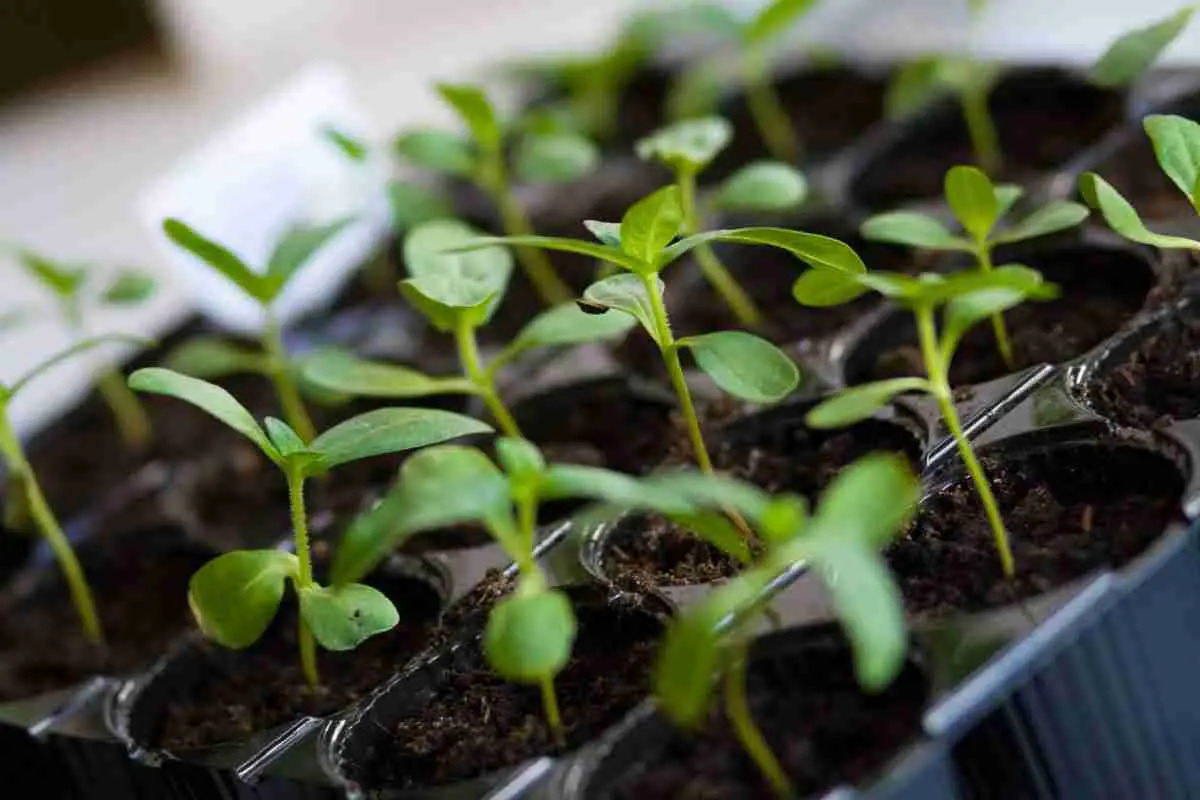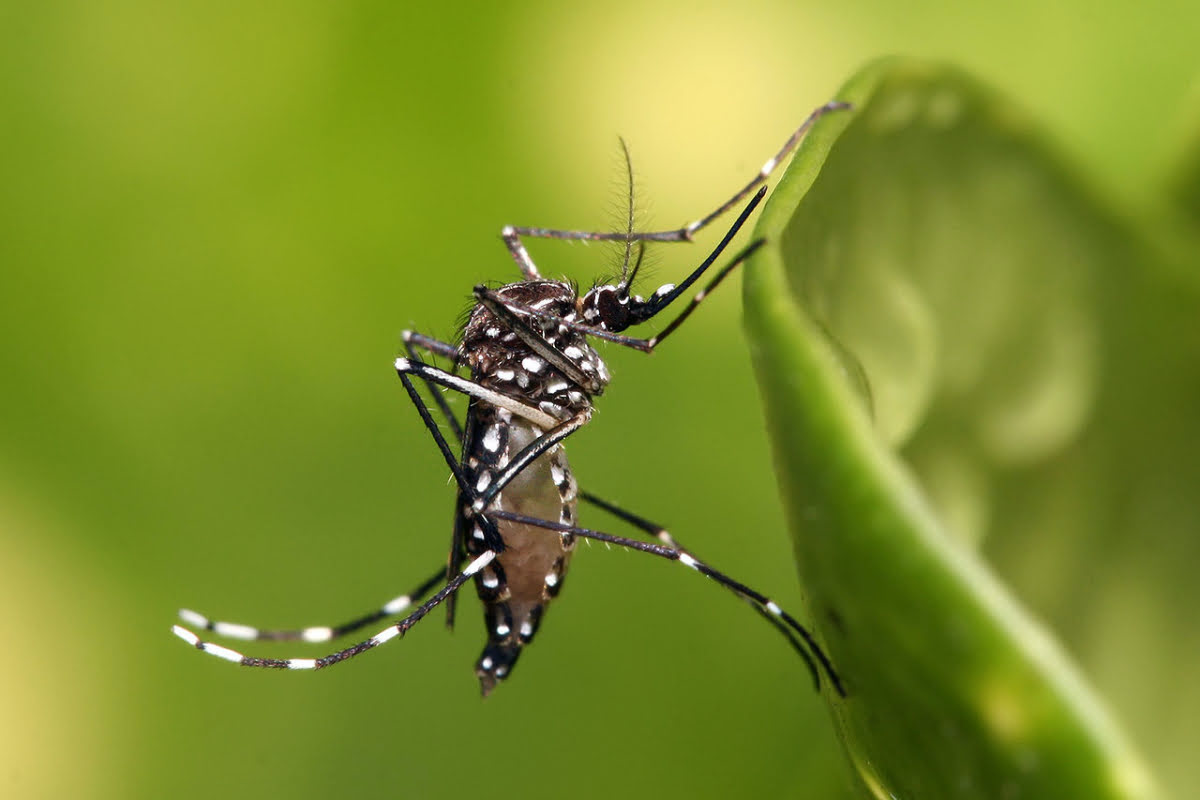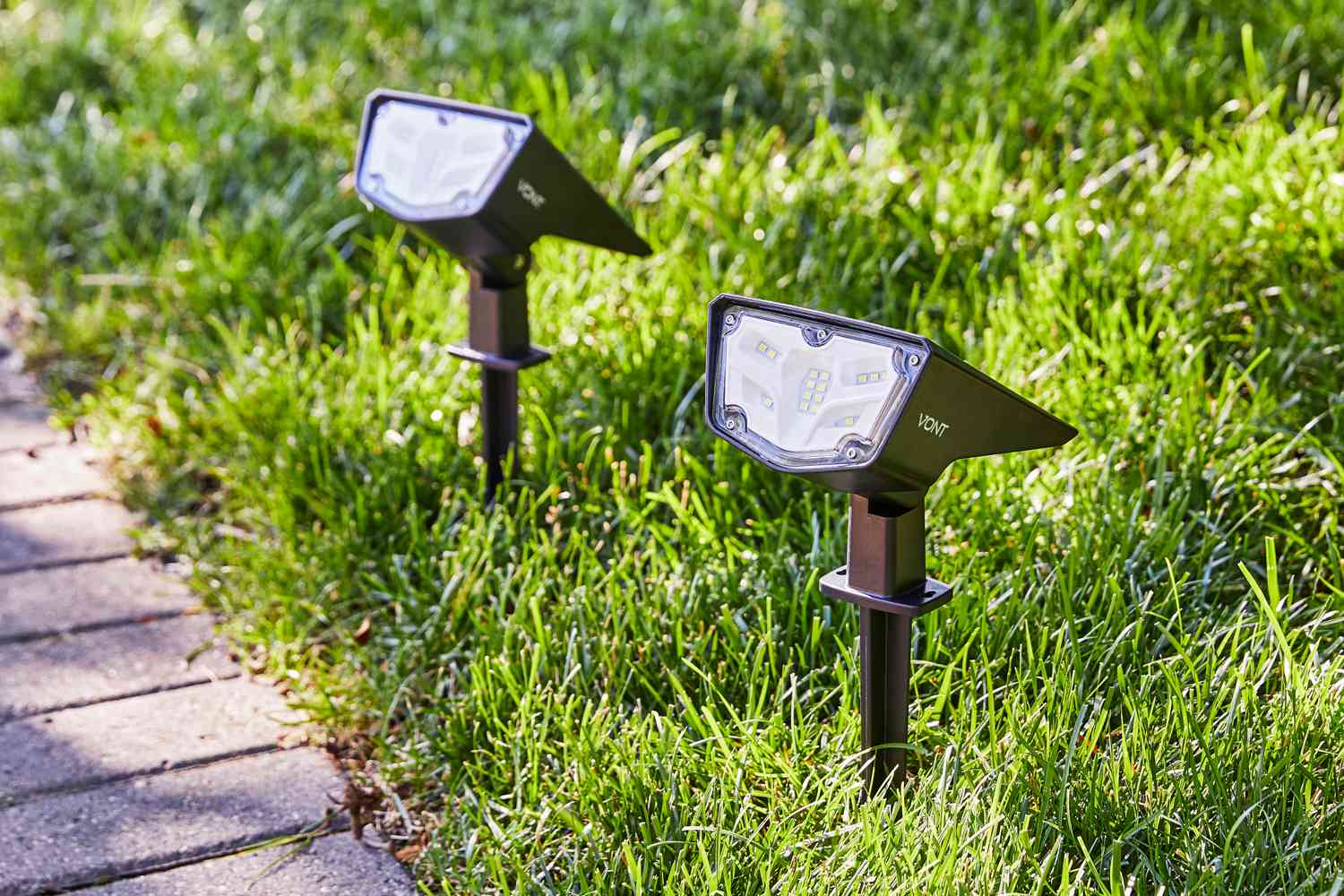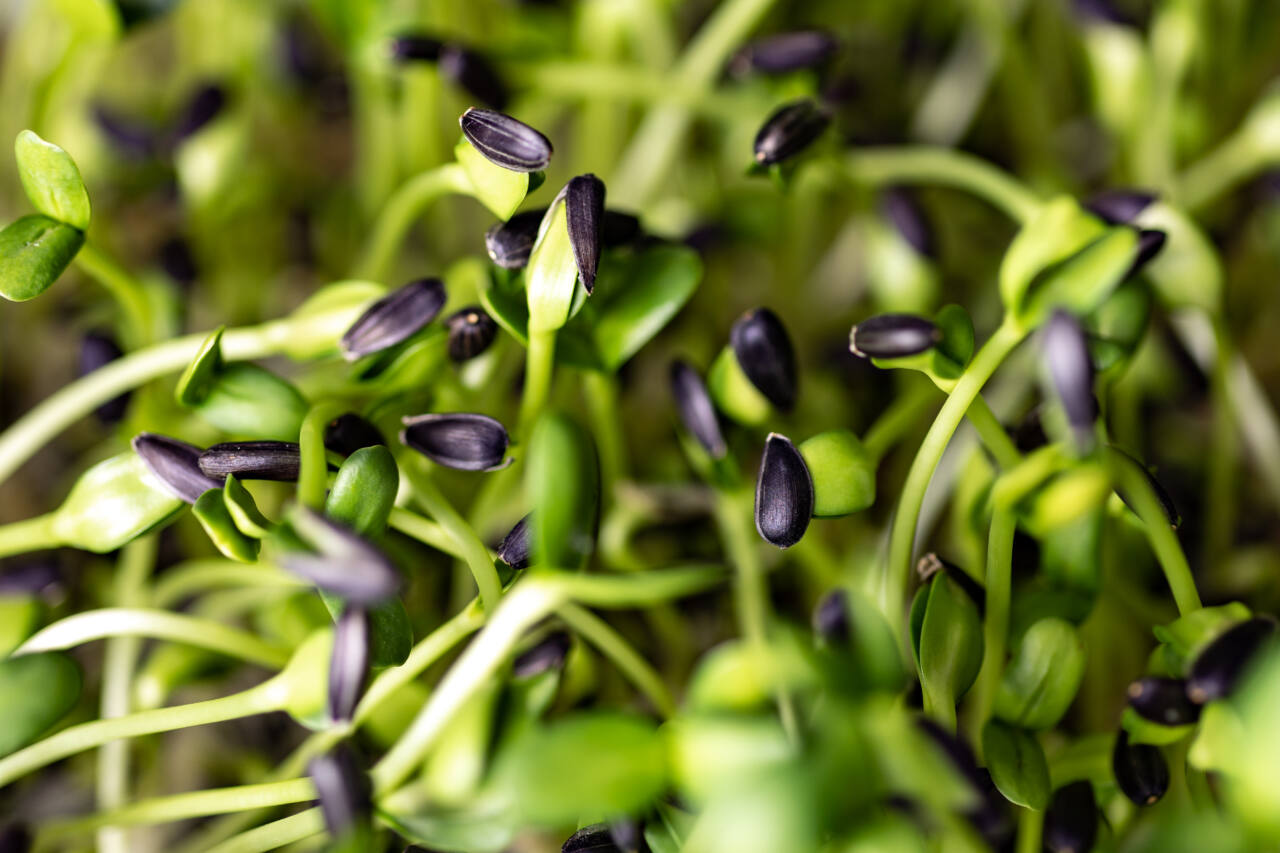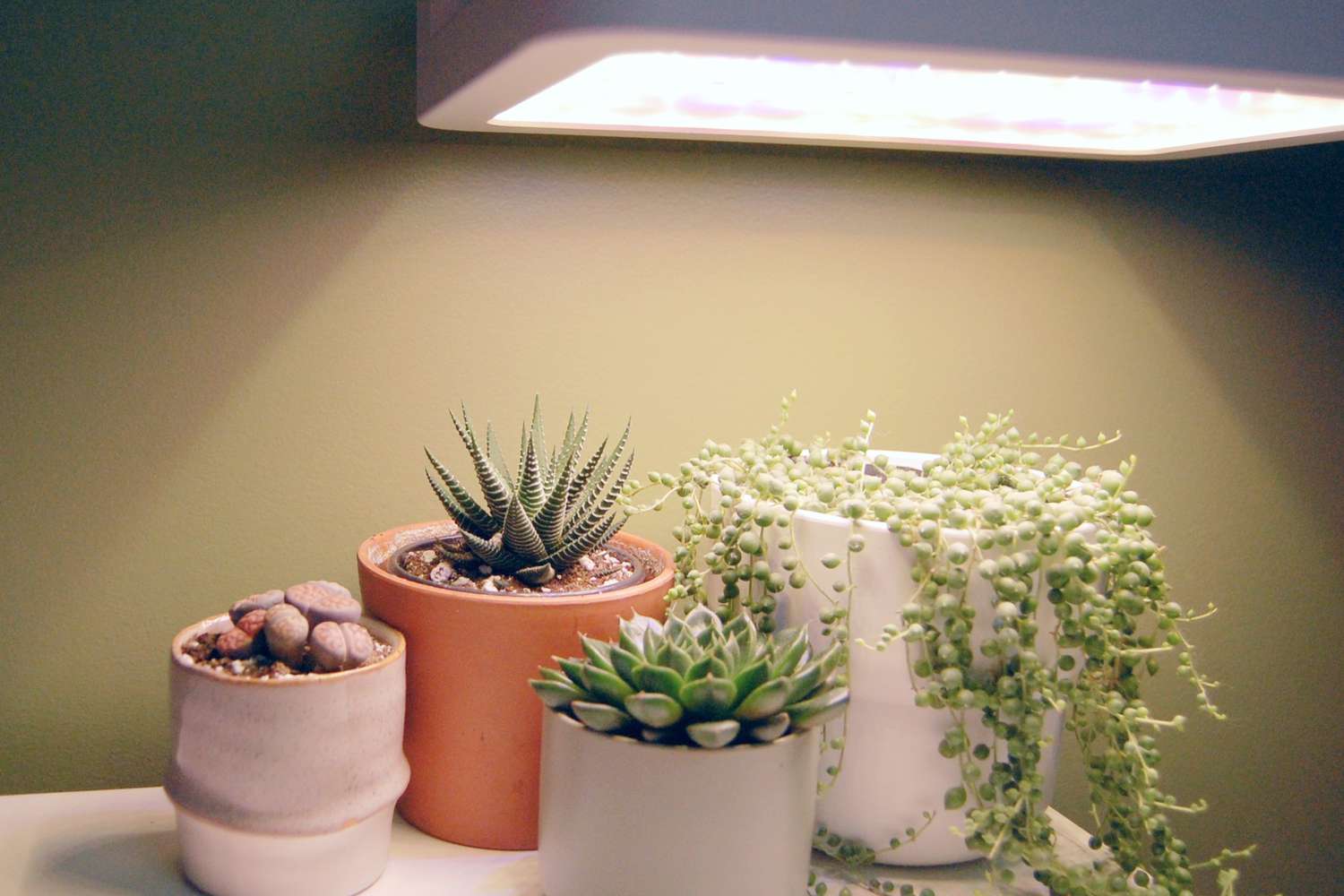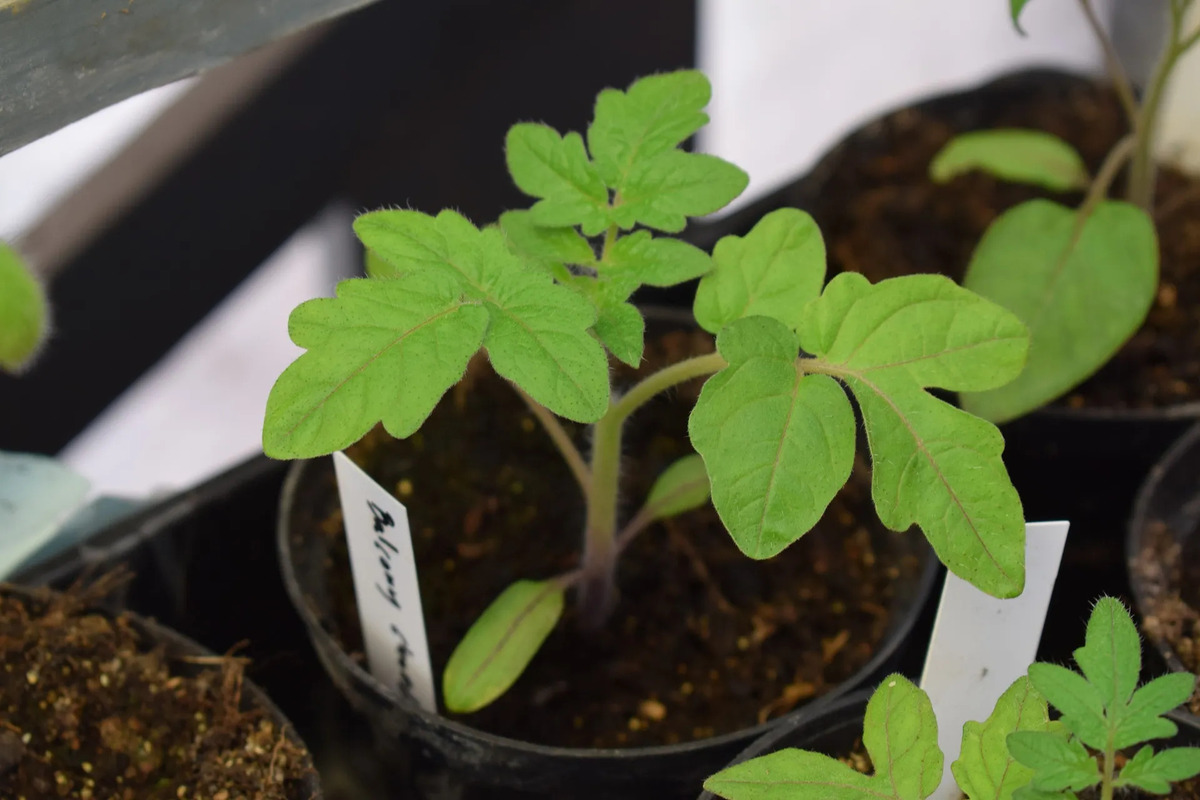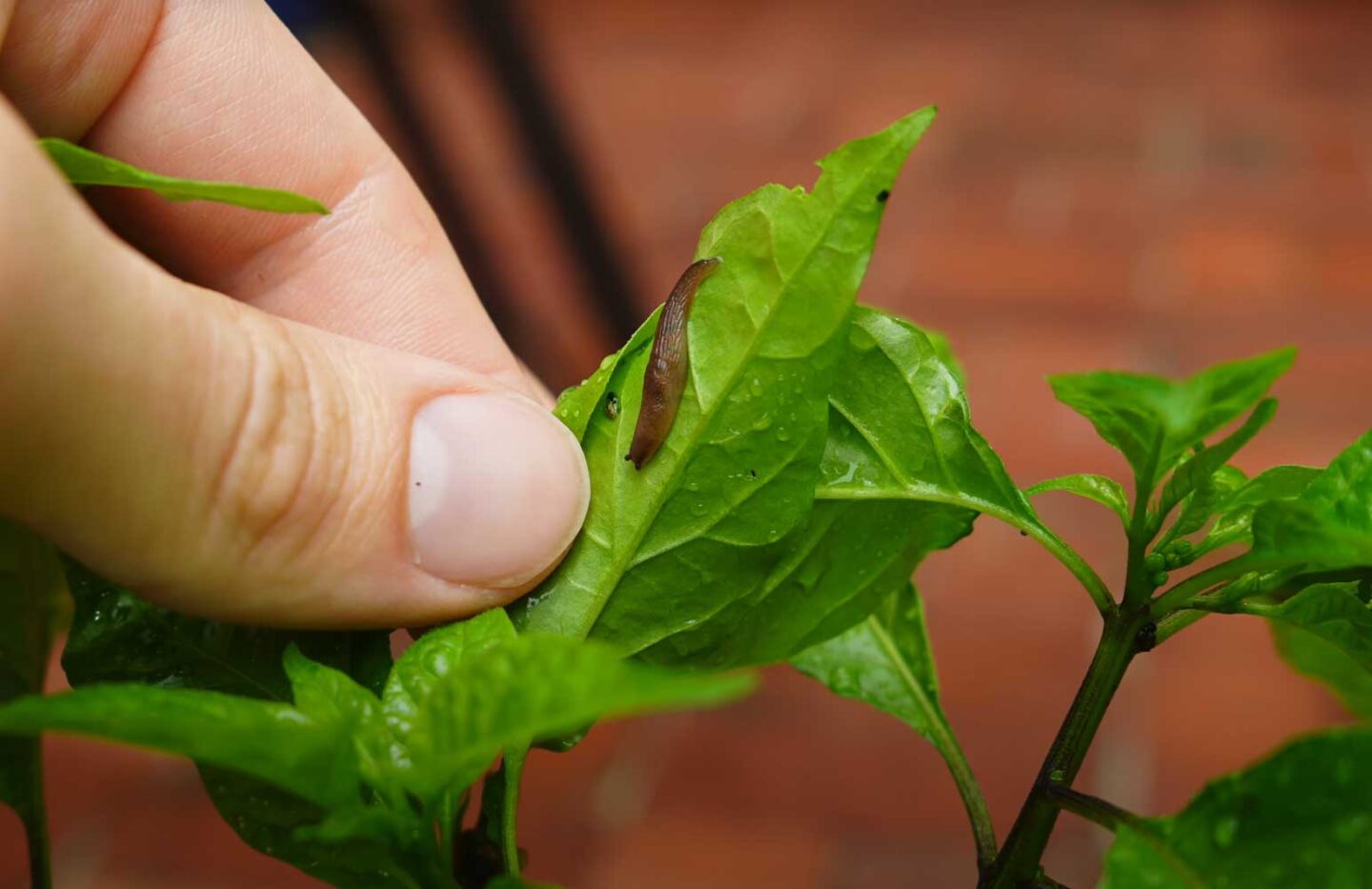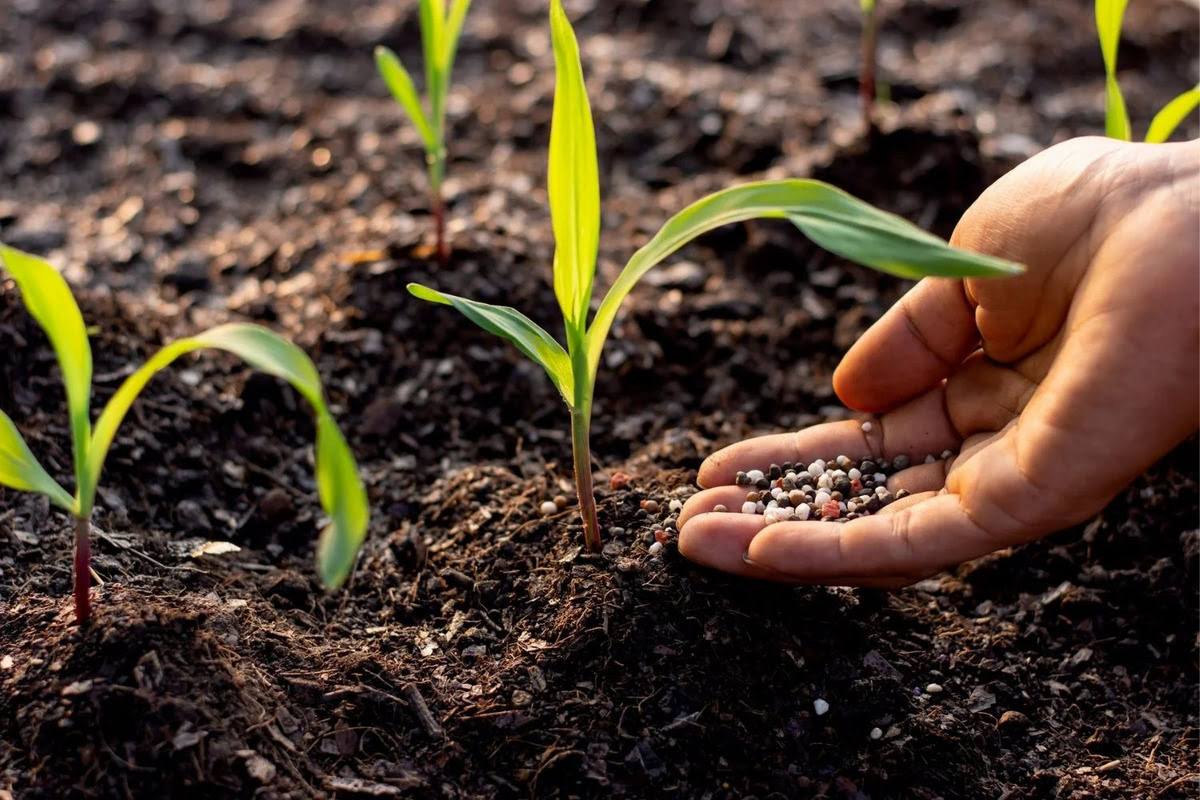Home>Types of Gardening>Edible Gardening>What Light For Seedlings


Edible Gardening
What Light For Seedlings
Modified: January 22, 2024
Get the best light for seedlings in your edible gardening journey. Find out how to maximize growth with the right light setup.
(Many of the links in this article redirect to a specific reviewed product. Your purchase of these products through affiliate links helps to generate commission for Chicagolandgardening.com, at no extra cost. Learn more)
Table of Contents
- Introduction
- Importance of Light for Seedlings
- Types of Light for Seedlings
- Natural Light
- Artificial Light
- Benefits and Drawbacks of Natural Light
- Benefits and Drawbacks of Artificial Light
- How to Determine the Right Light for Seedlings
- Factors to Consider
- Duration and Intensity of Light
- Light Spectrum
- Setting Up a Light System for Seedlings
- Choosing the Best Light Bulbs
- Distance and Placement of Lights
- Monitoring Light Exposure
- Common Mistakes to Avoid
- Conclusion
Introduction
Edible gardening is a rewarding and sustainable way to cultivate your own food right at home. Whether you have a spacious backyard or a small balcony, growing your own vegetables and fruits can provide you with fresh, nutritious produce and a sense of accomplishment. While there are many factors to consider when starting an edible garden, one crucial element that often gets overlooked is the significance of light for seedlings.
Light plays a vital role in the growth and development of seedlings, ensuring they receive the energy they need to thrive. Understanding the different types of light, its benefits, drawbacks, and how to determine the right light for seedlings is essential for successful edible gardening.
In this article, we will explore the various aspects of light for seedlings, including natural and artificial light sources, how to set up a light system, and common mistakes to avoid. By the end, you’ll have a comprehensive understanding of the importance of light and how to provide the optimal conditions for your seedlings to flourish.
Importance of Light for Seedlings
Light is an essential factor in the growth and development of seedlings. It provides the energy necessary for photosynthesis, the process by which plants convert light into sugars to fuel their growth. Proper exposure to light helps seedlings develop strong, healthy stems and leaves, as well as promote the production of chlorophyll, the pigment responsible for their green color.
When seedlings lack sufficient light, they become weak and leggy, with long, spindly stems that are prone to breaking. Insufficient light also leads to stunted growth, pale or yellow leaves, and a decreased ability to produce flowers and fruits.
Proper light exposure during the early stages of growth is critical for seedlings, as it sets the foundation for their overall health and productivity. It helps establish a robust root system, enhances nutrient absorption, and increases the chances of successful transplanting into the garden.
Moreover, light plays a crucial role in regulating the biological processes of seedlings. It influences the plant’s hormone production, including auxins, which control cell elongation, and gibberellins, which stimulate stem and leaf growth. Adequate light exposure also helps seedlings establish their natural rhythm and adapt to changing environmental conditions.
By providing the right amount and quality of light, you can optimize the growth and development of your seedlings, ensuring they have the best start towards becoming productive, thriving plants in your garden.
Types of Light for Seedlings
When it comes to providing light for your seedlings, there are two primary sources to consider: natural light and artificial light.
Natural Light: Natural sunlight is the ideal light source for seedlings. It provides a full spectrum of light that contains all the necessary wavelengths for optimal plant growth. The intensity of natural light changes throughout the day and varies depending on factors such as geographic location, time of year, and weather conditions. South-facing windows, balconies, or greenhouse structures are excellent places to expose your seedlings to natural sunlight.
Artificial Light: Artificial light sources, such as fluorescent lights, LED grow lights, and high-intensity discharge (HID) lights, are widely used to supplement or replace natural light. These lights emit specific wavelengths that are beneficial for plant growth. The advantage of using artificial light is that you have control over the intensity, duration, and spectrum of light, allowing you to create consistent growing conditions for your seedlings, regardless of natural light limitations.
Both natural and artificial light can be effective for seedlings, but each has its benefits and drawbacks. Understanding these differences will help you make an informed decision about the best light source for your seedlings.
Note: In this article, we will focus on both natural and artificial light sources, providing insights into their benefits, drawbacks, and how to apply them effectively for your seedlings’ growth.
Natural Light
Natural light, specifically sunlight, is the most ideal and readily available light source for seedlings. It provides a full spectrum of light that contains all the necessary wavelengths for optimal plant growth. However, it is important to understand how to utilize natural light effectively for your seedlings.
The intensity and duration of natural light vary throughout the day and depend on factors such as geographic location, time of year, and weather conditions. South-facing windows are excellent spots to expose your seedlings to natural sunlight as they receive the most direct light throughout the day. If you don’t have access to south-facing windows, consider using west or east-facing windows, which still provide substantial light during certain parts of the day. However, be cautious of windows that may have obstructions like trees or buildings that could limit light penetration.
One advantage of natural light is that it stimulates natural growth patterns in seedlings. The changing intensity throughout the day mimics outdoor conditions, allowing seedlings to develop their biological rhythms and acclimate to the transition to the garden. Additionally, natural light provides a diverse spectrum of wavelengths that promote balanced growth and development.
However, there are some drawbacks to relying solely on natural light for your seedlings. Limited access to sunlight, especially in regions with short daylight hours or during cloudy periods, may result in insufficient light levels for proper growth. Furthermore, certain windows may filter out specific wavelengths, affecting the quality of light received by the seedlings. As a result, seedlings may become leggy and weak if they do not receive adequate light exposure.
Overall, natural light is an excellent option for seedlings, but it may need to be supplemented or augmented by artificial light sources, especially in areas with limited sunlight or during the winter months. Understanding and optimizing the natural light available to your seedlings will help them develop into strong, healthy plants ready for transplantation into the garden.
Artificial Light
Artificial light sources have become increasingly popular for providing supplemental or sole light for seedlings. These lights are designed to emit specific wavelengths that are beneficial for plant growth, making them a reliable option when natural light is limited or not available.
There are several types of artificial lights commonly used for seedlings, including fluorescent lights, LED grow lights, and high-intensity discharge (HID) lights. Each type has its advantages and disadvantages, so it’s important to choose the right one for your specific needs.
Fluorescent Lights: Fluorescent lights are affordable and widely available. They come in different types, such as T5 and T8 bulbs, and emit a balanced spectrum of light that promotes vegetative growth. They are energy-efficient and produce low heat, which reduces the risk of burning seedlings. However, fluorescent lights have limited penetration and may need to be placed close to the seedlings for effective light exposure.
LED Grow Lights: LED grow lights are becoming increasingly popular due to their energy efficiency and customizable spectrum options. LED lights can be tailored to produce specific wavelengths of light, such as blue and red, which are crucial for different growth stages. They generate less heat, reducing the risk of plant damage, and can be placed closer to the seedlings without causing harm. However, LED grow lights can be more expensive than other options initially.
High-Intensity Discharge (HID) Lights: HID lights, including metal halide (MH) and high-pressure sodium (HPS) lights, are highly efficient and emit intense light that promotes rapid growth. MH lights are ideal for vegetative growth, while HPS lights are better suited for flowering and fruiting stages. However, HID lights can be expensive to operate and produce a significant amount of heat, requiring proper ventilation and cooling systems to prevent damage to the seedlings.
When using artificial light for your seedlings, it’s important to consider the light intensity, duration, and distance from the seedlings. Aim for a light intensity of around 2000 to 3000 lumens per square foot and provide 12 to 16 hours of light per day. Adjust the distance between the lights and the seedlings to maintain an optimal balance between light exposure and heat generation.
Overall, artificial light sources offer flexibility and control over the light spectrum, allowing you to provide consistent and customized lighting conditions for your seedlings’ growth. They can be a reliable solution for indoor or low-light environments, ensuring your seedlings receive the light they need to develop into healthy, strong plants.
Benefits and Drawbacks of Natural Light
Natural light, specifically sunlight, offers several benefits for seedlings during their growth and development.
1. Full Spectrum of Light: Natural sunlight provides a full spectrum of light that contains all the wavelengths necessary for optimal plant growth. This balanced spectrum promotes healthy photosynthesis and overall plant development.
2. Natural Rhythm: Exposing seedlings to natural light helps them establish their natural biological rhythms, allowing them to adapt and thrive in outdoor conditions. This is essential for their successful transition to the garden.
3. Cost-effective: Natural light is free and readily available. Utilizing natural sunlight reduces the need for artificial light sources, saving on energy costs and equipment expenses.
However, natural light also has some drawbacks that need to be considered:
1. Limited Availability: Depending on geographic location, time of year, and weather conditions, natural light may not be consistently available or may be insufficient for proper seedling growth. Short daylight hours during winter or cloudy periods can limit the intensity and duration of natural light.
2. Variable Light Intensity: Natural light intensity changes throughout the day, and not all areas in your home or garden receive direct sunlight. This can lead to uneven light distribution among the seedlings, resulting in variations in growth patterns.
3. Sunlight Filtering: Some windows or greenhouse materials may filter out or alter certain wavelengths, affecting the quality and quantity of light received by the seedlings. This can impact their growth and development if the filtered light does not provide the necessary energy and wavelengths.
Despite these drawbacks, natural light remains a valuable source of energy for seedlings. By maximizing natural light exposure and supplementing as needed, you can harness the benefits of sunlight while addressing its limitations. This ensures your seedlings receive the best possible light conditions for healthy growth and development.
Benefits and Drawbacks of Artificial Light
Artificial light sources offer several benefits for seedlings, especially when natural light is limited or not available. However, it is important to consider the drawbacks of relying solely on artificial light for seedling growth.
Benefits of Artificial Light:
- Consistent Light Source: Artificial lights provide a reliable and consistent light source, allowing you to create a controlled environment for seedlings regardless of external conditions.
- Customizable Spectrum: Some artificial lights, such as LED grow lights, allow you to customize the light spectrum to match specific growth stages. This can optimize growth and development for different types of seedlings.
- Extended Light Duration: With artificial lights, you have the flexibility to extend the duration of light exposure beyond natural daylight hours. This can provide seedlings with additional energy for faster growth.
- Supplemental Lighting: Artificial lights can supplement natural light, ensuring that seedlings receive sufficient light energy during periods of low natural light, such as winter or cloudy days.
Drawbacks of Artificial Light:
- Initial Cost: The initial cost of purchasing artificial lights and the necessary equipment can be higher compared to relying solely on natural light.
- Heat Generation: Some types of artificial lights, such as HID lights, can generate significant amounts of heat. Without proper ventilation or cooling systems, this can lead to heat stress and potential damage to the seedlings.
- Energy Expense: Artificial lights consume energy, which can increase electricity costs. However, energy-efficient options like LED grow lights can help mitigate this drawback.
While there are drawbacks to using artificial light, they can be mitigated with proper setup and adjustments. By understanding the benefits and drawbacks of artificial light, you can make informed decisions about incorporating it into your seedling growth strategy and optimize their growth potential.
How to Determine the Right Light for Seedlings
Determining the right light for your seedlings involves considering several factors, including duration and intensity of light, as well as the light spectrum. By carefully assessing these factors, you can provide the optimal light conditions for your seedlings’ growth and development.
Factors to Consider:
1. Duration of Light: Seedlings need an appropriate duration of light exposure to promote healthy growth. Most seedlings require 12 to 16 hours of light per day. However, some plants may have specific light requirements, so it’s important to research the individual needs of the seeds or plants you are growing.
2. Intensity of Light: The intensity of light is measured in lumens or foot-candles. Seedlings generally require around 2000 to 3000 lumens per square foot for optimal growth. This can be achieved by placing the light source at the appropriate distance from the seedlings.
3. Light Spectrum: The light spectrum refers to the different wavelengths of light emitted by the light source. Seedlings require a balanced spectrum that includes both blue and red light wavelengths. Blue light promotes leaf and stem development, while red light aids in flowering and fruiting. Consider using lights that provide a full spectrum or customize the spectrum to match the specific growth stage of your seedlings.
When determining the right light for your seedlings, it is important to consider the specific requirements of the plants you are growing. Some plants may have different light needs depending on their growth stage, such as the vegetative or flowering phase. Researching the specific light requirements of your seedlings will help you provide the optimal lighting conditions.
Note: The right light for seedlings may vary depending on the specific plants being grown. It is always recommended to refer to plant-specific guidelines or consult with gardening experts for precise light requirements.
Factors to Consider
When determining the right lighting conditions for seedlings, there are several important factors to consider. These factors will help you create an optimal environment for your seedlings to thrive and reach their full potential.
1. Light Intensity: The intensity of light refers to the brightness or level of illumination provided by the light source. It is measured in lumens or foot-candles. Different types of plants have varying light intensity requirements, so it’s crucial to research the specific needs of your seedlings. Providing the right light intensity ensures proper photosynthesis and allows for healthy growth and development.
2. Duration of Light Exposure: The duration of light exposure refers to the number of hours of light that seedlings receive each day. Seedlings generally require 12 to 16 hours of light per day to thrive. However, some plants may have specific requirements, such as needing more or less light depending on their growth stage. Understanding the light duration needs of your seedlings is essential for maintaining their health and promoting optimal growth.
3. Light Spectrum: The light spectrum refers to the different wavelengths of light emitted by the light source. Different wavelengths have varying effects on plant growth and development. Blue light promotes vegetative growth, while red light stimulates flowering and fruiting. Seedlings require a balanced spectrum that includes both blue and red light to ensure comprehensive growth. Consider using lights that provide a full spectrum or customizing the light spectrum to match the specific needs of your seedlings.
4. Distance from Light Source: The distance between the seedlings and the light source is critical for ensuring sufficient light exposure without causing heat stress or light burn. Different types of lights have different recommended distances, so it’s important to follow the manufacturer’s instructions. Adjust the height of the light source accordingly to strike the right balance between light intensity and heat generation.
5. Environmental Conditions: Consider the environmental conditions in which your seedlings are growing. Factors such as temperature, humidity, and airflow can affect how the seedlings respond to light. Ensure that the surrounding conditions are suitable for the type of seedlings you are growing and complement the light conditions provided.
By carefully considering these factors and adjusting the lighting conditions accordingly, you can create an optimal environment for your seedlings. This will promote healthy growth, strong roots, and robust plants ready for transplanting into your garden.
Duration and Intensity of Light
The duration and intensity of light are crucial factors to consider when providing the optimal lighting conditions for seedlings. Understanding how these factors influence seedling growth will help you create the right environment for healthy and vigorous plants.
Duration of Light:
The duration of light refers to the number of hours of light exposure that seedlings receive each day. Most seedlings require 12 to 16 hours of light per day to grow and develop properly. However, it is important to note that some plants may have specific light duration requirements. For example, certain flowering plants may require shorter periods of light exposure during their vegetative stage and longer periods during their flowering stage.
Providing the correct duration of light is essential for maintaining the plant’s energy balance. It allows for sufficient photosynthesis to occur, enabling seedlings to produce the necessary sugars and nutrients for growth. Additionally, the duration of light exposure helps regulate the plant’s internal clock and growth patterns, ensuring proper development and preparation for eventual transplanting.
Intensity of Light:
The intensity of light refers to the level of brightness or illumination provided by the light source. It is typically measured in lumens or foot-candles. The intensity of light directly affects the growth rate and quality of seedlings.
Each plant species has different intensity requirements. Some seedlings may require higher light intensity, while others may thrive with lower levels. As a general guideline, most seedlings require around 2000 to 3000 lumens per square foot. However, it’s important to consult specific plant guidelines and adjust the intensity accordingly.
When considering light intensity, it’s also crucial to balance it with the risk of heat stress. Some light sources, such as high-intensity discharge (HID) lights, may produce significant heat. Maintaining an appropriate distance between the light source and the seedlings will help regulate both light intensity and heat levels.
By understanding and adjusting the duration and intensity of light, you can create the optimal lighting conditions for seedlings to promote healthy growth. Pay attention to the individual requirements of the plant species you are growing to ensure they receive the right amount of light for their specific needs.
Light Spectrum
The light spectrum refers to the different wavelengths of light emitted by the light source. Seedlings require a balanced light spectrum to ensure proper growth and development. Understanding the significance of different light wavelengths and their effects on plant physiology is crucial for optimizing seedling health.
Blue Light:
Blue light, which falls within the range of approximately 400 to 500 nanometers, plays a critical role in seedling development. It is essential for promoting vegetative growth, including the development of sturdy stems, robust leaves, and a healthy root system. Blue light is particularly important for plants grown indoors or in low light conditions as it helps prevent seedlings from becoming leggy or weak.
Red Light:
Red light, with wavelengths of approximately 600 to 700 nanometers, is crucial for various growth processes, especially during the flowering and fruiting stages. It stimulates flowering, enhances fruit production, and aids in the formation of chlorophyll, the pigment responsible for photosynthesis. Red light is vital for overall plant development and is necessary to promote healthy blooms and bountiful harvests.
Other Wavelengths:
In addition to blue and red light, there are other wavelengths that affect plant growth. Green light, for example, has a minimal impact on plant growth but is reflected by chlorophyll, giving plants their green appearance. Far-red light, on the other hand, plays a role in regulating the plant’s photoperiodic responses and can influence germination, flowering, and other developmental processes.
Customizing the Light Spectrum:
With advancements in lighting technology, it is now possible to customize the light spectrum using artificial light sources such as LED grow lights. This allows growers to tailor the light spectrum to match the specific needs of their seedlings. By manipulating the ratios of blue, red, and other wavelengths, you can optimize growth, flowering, or fruiting, depending on the growth stage of your seedlings.
It’s important to note that different plant species have varying light spectrum requirements. Researching the light preferences of the specific plants you are growing will help you determine the appropriate balance and adjust the light spectrum accordingly.
By providing your seedlings with a balanced light spectrum, you can ensure they receive the essential wavelengths needed for healthy growth and development. Understanding the role of different light colors and customizing the light spectrum will contribute to vibrant, thriving seedlings ready for transplanting into your garden.
Setting Up a Light System for Seedlings
Setting up a proper light system is crucial to ensure that your seedlings receive the optimal amount and quality of light for healthy growth. Here are some key steps to consider when setting up a light system for your seedlings:
1. Choosing the Best Light Bulbs: Select a light source that provides the appropriate spectrum for seedling growth. Fluorescent lights, LED grow lights, and high-intensity discharge (HID) lights are commonly used options. Consider the specific needs of your seedlings and choose a light bulb that will deliver the necessary intensity and spectrum.
2. Distance and Placement of Lights: Position the light source at the correct distance from the seedlings to provide the right intensity of light without overheating or burning them. Refer to the manufacturer’s guidelines for recommended distances, and adjust the height as the seedlings grow. As a general rule, maintain a distance of 6-12 inches from fluorescent lights and 12-24 inches from LED or HID lights.
3. Reflective Surfaces: Use reflective surfaces, such as aluminum foil or white-painted walls, around the sides and back of the seedlings to maximize light absorption. This will help to distribute and reflect the light onto the plants, ensuring that all areas receive adequate illumination.
4. Light Duration: Determine the appropriate duration of light exposure based on the specific needs of your seedlings. Most seedlings require around 12 to 16 hours of light per day, and a timer can be helpful in automating the light schedule. Ensure that the seedlings also have a period of darkness for proper rest and recovery.
5. Ventilation and Air Circulation: Good air circulation is important to prevent heat buildup and to ensure that carbon dioxide is effectively exchanged. Use fans or open windows to maintain a proper airflow around the seedlings, ensuring they receive fresh air while preventing excessive heat and humidity buildup.
6. Monitoring Light Exposure: Regularly monitor the seedlings’ response to the light system, checking for signs of legginess, leaf discoloration, or stunted growth. Adjust the distance, duration, or intensity of light as needed to provide optimal conditions. If seedlings show signs of stress, consider reducing the light intensity temporarily or increasing the distance from the light source.
By following these steps and fine-tuning your light system as necessary, you can create an ideal environment for seedling growth. Providing the right amount and quality of light will promote vigorous growth, healthy stems and leaves, and prepare your seedlings for successful transplantation into your garden.
Choosing the Best Light Bulbs
Choosing the right light bulbs for your seedlings is crucial for providing the optimal light spectrum and intensity they need for healthy growth. There are various types of light bulbs available, each with its advantages and considerations. Here are some factors to consider when selecting the best light bulbs for your seedlings:
1. Fluorescent Lights: Fluorescent lights are a popular and affordable option for seedlings. They are available in different types such as T5 and T8 bulbs. Fluorescent lights produce a balanced spectrum of light that promotes vegetative growth. They are energy-efficient and emit lower heat, reducing the risk of burning the seedlings. However, they may have limited penetration and may need to be placed closer to the plants for effective light exposure.
2. LED Grow Lights: LED grow lights have gained popularity for their energy efficiency and customizable spectrum options. LED lights can be tailored to emit specific wavelengths, including blue and red, which are crucial for different growth stages. They produce less heat, allowing them to be placed closer to the seedlings without causing damage. While LED grow lights may be more expensive initially, they have a longer lifespan and can result in cost savings in the long run.
3. High-Intensity Discharge (HID) Lights: HID lights, such as metal halide (MH) and high-pressure sodium (HPS) lights, are highly efficient and emit intense light that promotes rapid growth. MH lights are ideal for vegetative growth stages, while HPS lights are better suited for flowering and fruiting stages. HID lights can provide a broad spectrum of light that supports overall plant development. However, they can be more expensive to operate and produce significant heat, requiring proper ventilation and cooling systems to prevent damage to the seedlings.
When choosing light bulbs, consider the specific requirements of your seedlings and the stage of growth they are in. Research the specific light spectrum needs of the plants you are growing and select bulbs that provide the appropriate wavelengths. Additionally, consider factors such as energy efficiency, lifespan, and initial investment cost to find the best balance for your needs.
Remember that the right light bulbs can make a significant difference in the growth and development of your seedlings. By providing the correct light spectrum and intensity, you can ensure that your seedlings receive the necessary energy for healthy, vigorous growth.
Distance and Placement of Lights
The distance and placement of lights play a crucial role in providing the right amount of light and preventing heat stress for your seedlings. Proper positioning will ensure that your seedlings receive an adequate light intensity without risking damage or stunted growth. Here are some guidelines to consider for the distance and placement of lights for your seedlings:
1. Recommended Distance:
The recommended distance between the light source and your seedlings will depend on the type of light you are using. As a general rule, fluorescent lights should be positioned approximately 6 to 12 inches above the seedlings, while LED and HID lights are typically placed 12 to 24 inches away. Keep in mind that different manufacturers may have specific recommendations, so refer to the guidelines provided by the light manufacturer for proper distance.
2. Adjusting Height as Seedlings Grow:
As your seedlings grow taller, it is important to adjust the height of the light source accordingly. Keep the lights at an appropriate distance to ensure even light coverage and prevent the seedlings from stretching or leaning towards the light source. Continuing to maintain the proper distance as the seedlings grow will help provide consistent light exposure to all parts of the plants.
3. Consider Light Distribution:
Avoid placing the light source too close to one side or corner of your seedling trays or containers. Instead, position the lights centrally or in a way that allows for even light distribution. This will ensure that all seedlings receive uniform light exposure to prevent uneven growth patterns.
4. Multiple Light Sources:
If you have a larger growing area or multiple trays of seedlings, consider using multiple light sources to provide more even coverage. By spacing out the light sources appropriately, you can help ensure that all seedlings receive sufficient light and minimize shading or overcrowding.
5. Safety Precautions:
When it comes to placing lights, ensure that the fixtures and cords are securely installed and out of reach of water or sources of moisture. Make sure to follow safety guidelines for electrical equipment and use appropriate hanging or mounting mechanisms to prevent any potential hazards.
By maintaining the proper distance and placement of lights, you can provide the optimal light exposure for your seedlings. This will help promote healthy growth, prevent legginess, and ensure that your seedlings develop into strong, vibrant plants ready for transplanting into your garden.
Monitoring Light Exposure
Monitoring the light exposure of your seedlings is crucial for ensuring they receive the right amount and quality of light. Regular monitoring allows you to identify any issues or adjustments needed to maintain optimal growth conditions. Here are some key aspects to consider when monitoring the light exposure of your seedlings:
1. Visual Observation:
Observe your seedlings regularly to assess their response to the light. Look for signs of healthy growth such as sturdy stems, vibrant leaves, and balanced leaf color. Legginess, pale leaves, or spindly growth may indicate insufficient light exposure, while leaf scorching or bleaching could be signs of excessive light intensity.
2. Light Meters:
Consider using a light meter to measure the intensity of light that your seedlings are receiving. Light meters provide you with accurate readings and allow you to adjust the distance or intensity of the light source as needed. Place the light meter at the same level as the seedlings to get an accurate measurement of the light intensity they are experiencing.
3. Duration of Light:
Keep track of the duration of light exposure for your seedlings. Use a timer to ensure consistent and appropriate light cycles. If you notice any changes in growth patterns or health, consider adjusting the light duration to better suit the needs of your seedlings.
4. Adjustments and Fine-tuning:
Based on your observations and light meter readings, make necessary adjustments to the distance, intensity, or duration of light. If the seedlings are leaning towards the light source, it may indicate that the light is too far away. On the other hand, if the seedlings show signs of stress, such as leaf discoloration or wilting, it may be a sign of excessive light or heat. Regular monitoring allows you to fine-tune the light exposure to ensure optimal conditions.
5. Tracking Seedling Growth:
Keep a record of your seedling growth progress, including information about the light exposure they received. This will help you identify trends or patterns in growth and adjust your light system accordingly in future plantings.
Monitoring the light exposure of your seedlings is a continuous process that requires regular observation and adjustments. By being attentive and responsive to the needs of your seedlings, you can provide them with the best light conditions for healthy growth and development.
Common Mistakes to Avoid
Growing seedlings under proper light conditions is essential for their success. However, there are some common mistakes that gardeners often make when it comes to providing light for their seedlings. By avoiding these mistakes, you can ensure that your seedlings receive optimal light and maximize their growth potential.
1. Insufficient Light:
One of the most common mistakes is providing inadequate light for seedlings. Insufficient light leads to weak, leggy seedlings with poor growth. Make sure to provide the recommended duration and intensity of light for your seedlings to ensure healthy development.
2. Inconsistent Light Exposure:
Another mistake is irregular or inconsistent light exposure. Seedlings rely on consistent light cycles to establish their biological rhythms. Inconsistent light exposure can disrupt their growth patterns and lead to developmental issues. Use timers or automated systems to maintain consistent light cycles.
3. Placing Lights Too Far or Too Close:
Incorrect placement of lights is a common mistake. Placing lights too far away results in insufficient light intensity, while placing them too close can cause heat stress and light burn. Follow the recommended distance guidelines provided by the light manufacturer to ensure proper placement.
4. Using Incorrect Light Spectrum:
Not all light sources provide the proper spectrum for seedlings. Using lights with the wrong light spectrum can lead to imbalanced growth and poor development. Research the specific light spectrum requirements of your seedlings and choose light bulbs that provide the appropriate wavelengths.
5. Neglecting Air Circulation:
Proper air circulation around seedlings is often overlooked. Poor air circulation can lead to excess humidity, high temperatures, and the development of fungi or mold. Use fans or open windows to maintain adequate airflow and prevent issues caused by stagnant air.
6. Ignoring Seedling Response:
Failing to observe and respond to the seedlings’ response to light is a mistake. If seedlings show signs of legginess, wilting, or discoloration, it could be an indication of light-related issues. Monitor their growth closely and make necessary adjustments to the light intensity, duration, or distance to address any problems.
By avoiding these common mistakes, you can provide optimal light conditions for your seedlings, fostering healthy growth, and setting them up for success as they transition into the garden.
Conclusion
Proper lighting is essential for the successful growth and development of seedlings in edible gardening. Understanding the importance of light, different types of light sources, and how to provide the right light conditions is crucial for nurturing healthy and robust seedlings.
Natural light is the ideal light source, providing a full spectrum of wavelengths and mimicking outdoor conditions. However, in situations where natural light is limited or unavailable, artificial light sources such as fluorescent lights, LED grow lights, or HID lights can be used to supplement or replace natural light.
When setting up a light system, it is important to consider factors such as the duration and intensity of light, the light spectrum, and the proper distance and placement of lights. Monitoring the light exposure of seedlings and making necessary adjustments based on their response is also critical for maintaining optimal conditions.
Avoiding common mistakes such as insufficient light, inconsistency in light exposure, incorrect light placement, improper light spectrum, neglecting air circulation, and ignoring seedling response will help ensure that your seedlings receive the best possible light conditions for healthy growth.
By providing your seedlings with the right light, you set them on a path to thrive and become strong, productive plants ready for transplanting into your garden. With proper light, your edible garden will flourish, providing you with a bountiful harvest of fresh, homegrown produce to enjoy.
